"Science" Sub-Journal: The first time in history! High-strength pure zwitterionic hydrogel
High mechanical strength and long-term resistance to fibrous capsule formation are two major challenges facing implantable materials. Regrettably, these two distinct attributes are not organically combined, but compromised with each other. Recently, researchers such as Shaoyi Jiang from the University of Washington & Cornell University reported on a unique material that integrates two weak zwitterionic hydrogels into an elastomer-like structure through a "swelling" and "locking" mechanism. High strength pure zwitterionic hydrogel. Related papers were published on Science Advances with the title "High-strength and fibrouscapsule–resistant zwitterionic elastomers".
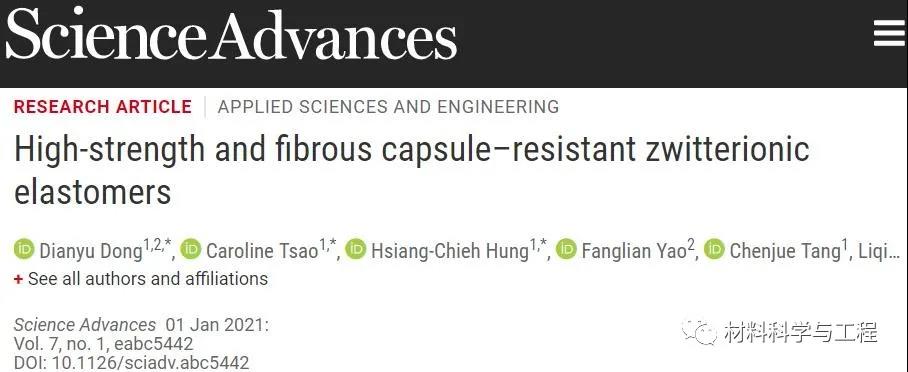
For a long time, synthetic hydrogels have been very attractive materials that can be used for medical applications that mimic biological tissues, such as tissue scaffolds. There are two main criteria for achieving this goal: excellent mechanical properties and long-term resistance to the formation of fibrous capsules caused by foreign body reactions. However, these properties usually do not coexist in the same material and harm each other. The former requires hydrophobicity and the latter requires hydrophilicity. Although in vitro protein adsorption, cell adhesion, and cytotoxicity are common methods for evaluating biological materials, they are far from solving the challenge of resisting fibrous capsules in complex living systems. The ability of this material to not trigger the formation of fibrous capsules for a long time after implantation is particularly challenging.
As we all know, almost all synthetic materials will cause foreign body reaction and fibrous capsule formation within 1 month after implantation. People have alleviated this foreign body reaction through the geometric shape or chemical modification of the material, and superhydrophilic zwitterionic hydrogels are particularly promising in solving this problem. In the researchers’ early studies, zwitterionic polycarboxybetaine (pCB) hydrogels have been shown to prevent the formation of envelopes 3 months after subcutaneous implantation in mice. This is the most effective way for biomaterials to alleviate this reaction. Long time. However, due to the super-hydrophilic nature of zwitterionic hydrogels, its mechanical properties are weak.
A simple solution to increase the mechanical properties of materials is to add hydrophobic components, but this increases protein adsorption and induces the formation of fibrous capsules. At the same time, various hydrogels have also made great progress in enhancing mechanical properties, such as double networks, reversible crosslinking; molecular sliding; and more properties. Although many hydrogels have low protein adsorption and cell adhesion, they are still far from long-term resistance to fibrous capsules.
Here, the researchers proposed a zwitterionic-elastomeric network (ZEN) hydrogel (Figure 1A), which is achieved by integrating two weak zwitterionic hydrogels: pCB and poly(sulfobetaine) (pSB) . In this pCB/pSB ZEN hydrogel, pCB is a minor component, forming a tight cross-linked network to generate elasticity, and pSB is the main component, forming a loose cross-linked network to provide viscosity. These zwitterionic-elastic mesh (ZEN) hydrogels can effectively resist the formation of fibrous capsules for up to 1 year after implantation in mice. This material has both high mechanical properties and long-term fiber capsule resistance, which has never been achieved before.
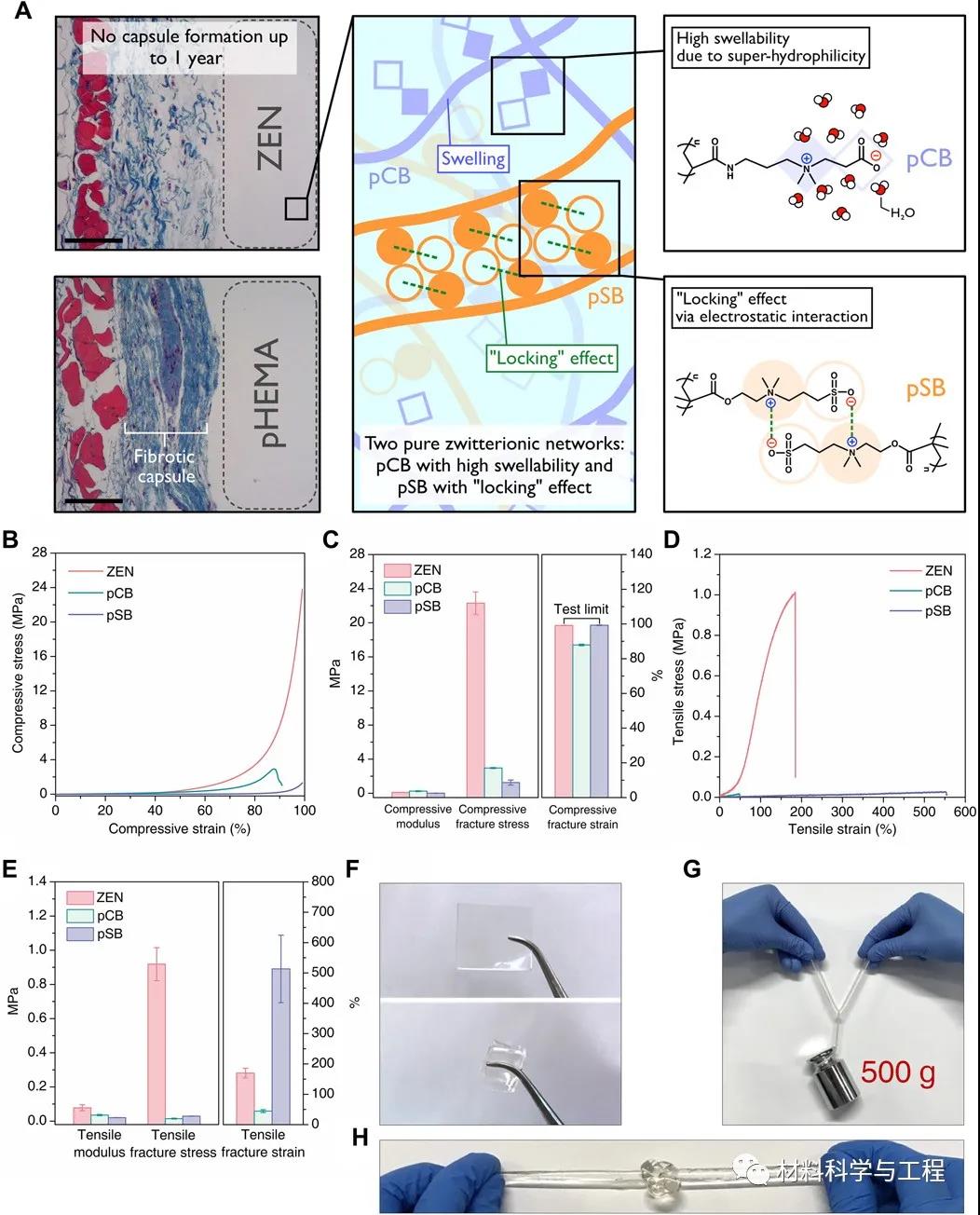
Figure 1 pCB/pSB ZEN hydrogel with high mechanical properties.
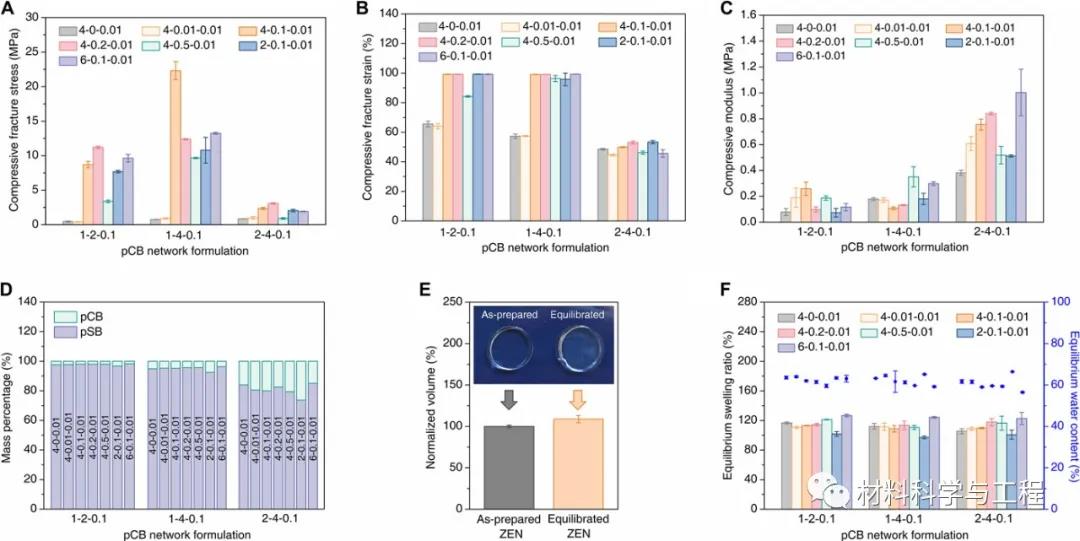
Figure 2 Mechanical properties and swelling properties of a series of pCB/pSB hydrogels.
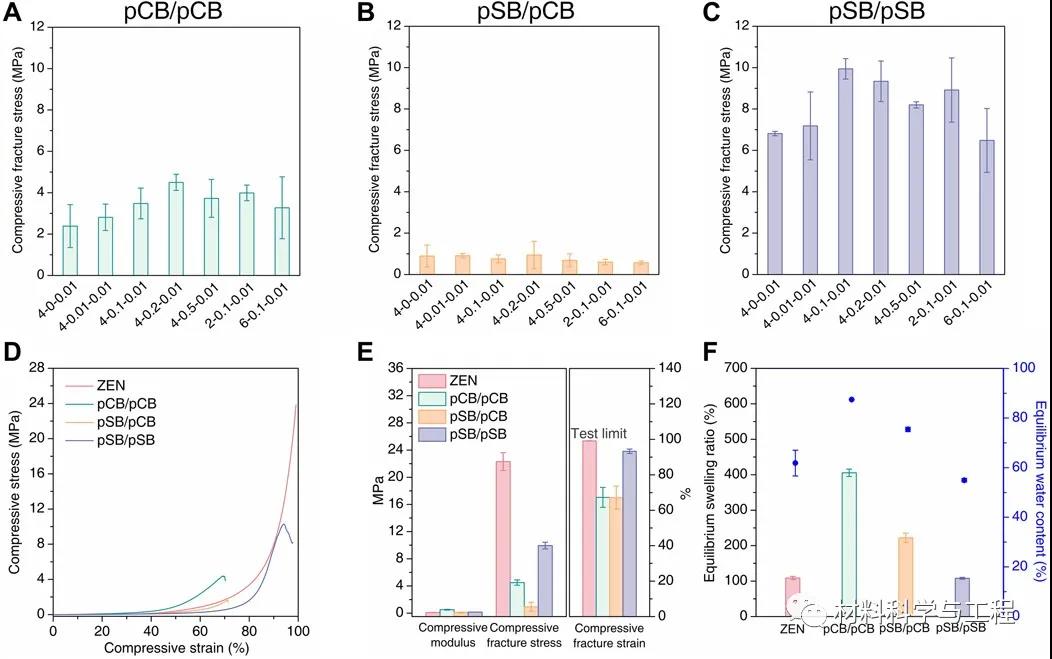
Figure 3 Basic design principles of ZEN hydrogel.
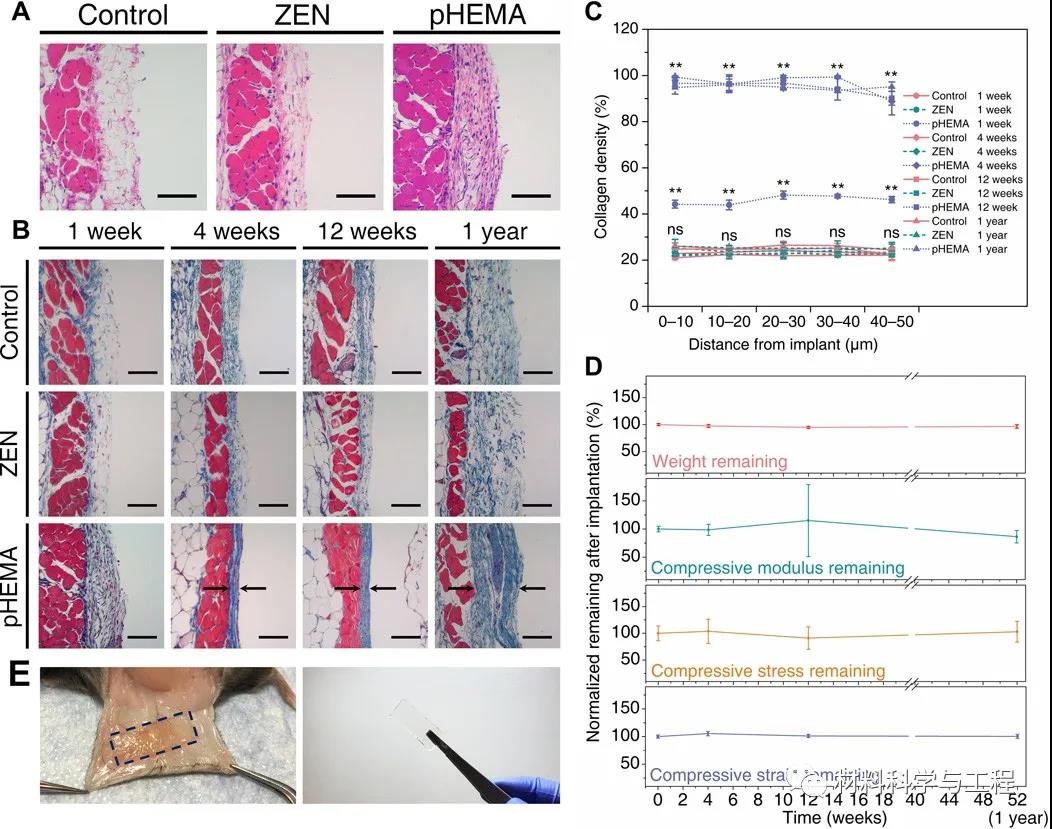
Figure 4 pCB/pSB ZEN hydrogel has long-term fibrous capsule tolerance and durability after subcutaneous implantation in mice for 1 year.
In summary, the researchers reported a "ZEN" hydrogel that exhibits a unique combination of mechanical strength and long-term resistance to fibrous capsules. The main feature of ZEN hydrogel is that it is composed of two different pure zwitterionic networks-a tightly cross-linked small component network with high swellability, and a loosely cross-linked main component network with a key locking effect. The study found that pCB/pSBZEN hydrogel exhibits good elasticity under a wide range of deformation, reduces the formation of fibrous capsules, and remains stable without degradation or loss of mechanical strength after subcutaneous implantation in mice for up to 1 year. The durability and fibrous cysticity of ZEN hydrogel will provide a new way for the long-term development of implant materials such as cartilage replacement, tissue repair and catheters.
Paper link:
https://advances.sciencemag.org/content/7/1/eabc5442

For a long time, synthetic hydrogels have been very attractive materials that can be used for medical applications that mimic biological tissues, such as tissue scaffolds. There are two main criteria for achieving this goal: excellent mechanical properties and long-term resistance to the formation of fibrous capsules caused by foreign body reactions. However, these properties usually do not coexist in the same material and harm each other. The former requires hydrophobicity and the latter requires hydrophilicity. Although in vitro protein adsorption, cell adhesion, and cytotoxicity are common methods for evaluating biological materials, they are far from solving the challenge of resisting fibrous capsules in complex living systems. The ability of this material to not trigger the formation of fibrous capsules for a long time after implantation is particularly challenging.
As we all know, almost all synthetic materials will cause foreign body reaction and fibrous capsule formation within 1 month after implantation. People have alleviated this foreign body reaction through the geometric shape or chemical modification of the material, and superhydrophilic zwitterionic hydrogels are particularly promising in solving this problem. In the researchers’ early studies, zwitterionic polycarboxybetaine (pCB) hydrogels have been shown to prevent the formation of envelopes 3 months after subcutaneous implantation in mice. This is the most effective way for biomaterials to alleviate this reaction. Long time. However, due to the super-hydrophilic nature of zwitterionic hydrogels, its mechanical properties are weak.
A simple solution to increase the mechanical properties of materials is to add hydrophobic components, but this increases protein adsorption and induces the formation of fibrous capsules. At the same time, various hydrogels have also made great progress in enhancing mechanical properties, such as double networks, reversible crosslinking; molecular sliding; and more properties. Although many hydrogels have low protein adsorption and cell adhesion, they are still far from long-term resistance to fibrous capsules.
Here, the researchers proposed a zwitterionic-elastomeric network (ZEN) hydrogel (Figure 1A), which is achieved by integrating two weak zwitterionic hydrogels: pCB and poly(sulfobetaine) (pSB) . In this pCB/pSB ZEN hydrogel, pCB is a minor component, forming a tight cross-linked network to generate elasticity, and pSB is the main component, forming a loose cross-linked network to provide viscosity. These zwitterionic-elastic mesh (ZEN) hydrogels can effectively resist the formation of fibrous capsules for up to 1 year after implantation in mice. This material has both high mechanical properties and long-term fiber capsule resistance, which has never been achieved before.

Figure 1 pCB/pSB ZEN hydrogel with high mechanical properties.

Figure 2 Mechanical properties and swelling properties of a series of pCB/pSB hydrogels.

Figure 3 Basic design principles of ZEN hydrogel.

Figure 4 pCB/pSB ZEN hydrogel has long-term fibrous capsule tolerance and durability after subcutaneous implantation in mice for 1 year.
In summary, the researchers reported a "ZEN" hydrogel that exhibits a unique combination of mechanical strength and long-term resistance to fibrous capsules. The main feature of ZEN hydrogel is that it is composed of two different pure zwitterionic networks-a tightly cross-linked small component network with high swellability, and a loosely cross-linked main component network with a key locking effect. The study found that pCB/pSBZEN hydrogel exhibits good elasticity under a wide range of deformation, reduces the formation of fibrous capsules, and remains stable without degradation or loss of mechanical strength after subcutaneous implantation in mice for up to 1 year. The durability and fibrous cysticity of ZEN hydrogel will provide a new way for the long-term development of implant materials such as cartilage replacement, tissue repair and catheters.
Paper link:
https://advances.sciencemag.org/content/7/1/eabc5442
18915694570
Previous: Use perovskite diodes


